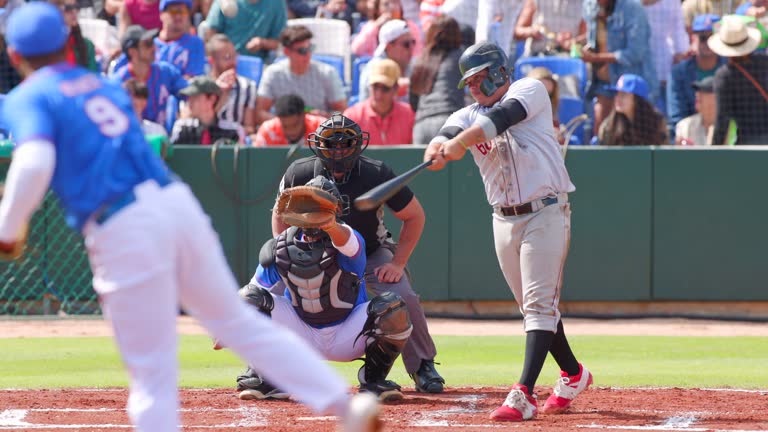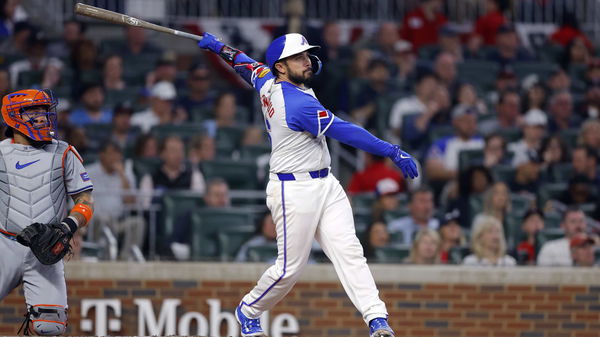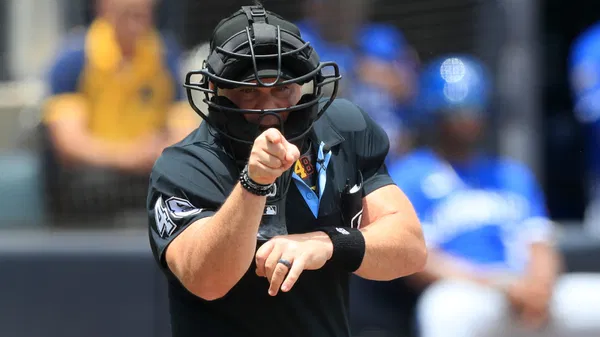
Imago
WS SLO MO batter watching ball fly toward outfield during at-bat in professional baseball game in stadium

Imago
WS SLO MO batter watching ball fly toward outfield during at-bat in professional baseball game in stadium
It wasn’t the first rule tweak in MLB history. But this one—a technical change to umpire evaluations—has left pitchers and catchers voicing frustration. The reason? The early 2025 season has seen fewer strikes on the edges of the zone. All due to a reduction in the “buffer zone” that umpires once relied on.
Watch What’s Trending Now!
Previously, the umpires operated with a 2-inch buffer zone on both sides of the plate, inside and outside the strike zone. This granted them the flexibility to call borderline pitches as strikes. The new rule, however, has reduced that margin to just 0.75 inches, causing chaos among the catchers and pitchers.
Shedding light on the problem, Los Angeles Angels’ catcher, Travis d’Arnaud, said, “Everybody’s zone has shrunk. Every umpire across the league.” This shrinking strike zone is a problem for the pitchers. Their responsibility is to strike out as many batters as possible while reducing the number of balls outside the zone. On the other hand, catchers often utilize the ‘framing’ technique to influence the umpires into calling strikes on the pitches that might be just outside the zone. So, it’s a challenge for them as well.
ADVERTISEMENT

ADVERTISEMENT
An MLB official claims that the umpires have never been instructed to call a different strike zone. However, the buffer zone has been reduced to better monitor umpires and ensure they make accurate calls. Adding more layers to the chaos, San Diego Padres manager Mike Shildt denied hearing anything official, stating, “I don’t remember having any communication with anybody at any point in time saying, ‘Hey, we’re going to tighten it up.’ Not at all.”
It turns out, Shildt isn’t alone with such a stance. Los Angeles Dodgers manager Dave Roberts also denied knowing about MLB’s rule of reducing the buffer zone. But if it turns out to be true, Roberts believes, “that’s a good thing.” He said, “I think that there is just so much grey with the strike zone, with the buffer zone being so big. To be quite honest, whatever adjustments for the umpiring there’ve been behind home plate, I’ve been really pleased with the consistency.”
ADVERTISEMENT
Cincinnati Reds manager David Bell echoed the sentiment: “I don’t believe so. I don’t remember that. That doesn’t mean they didn’t, because I can barely remember yesterday. My understanding was … it wasn’t a secret, but I don’t remember them sharing it.”
While most managers seem unaware of the MLB rule change, it’s clear that few, if any, have an issue with it. In fact, many see it as a step in the right direction to help umpires make more accurate calls. Still, one major question remains: Will this rule change be effective in the long run?
ADVERTISEMENT
Is the MLB rule change going to be successful in the long run?
Well, that’s a difficult question to answer at the moment. However, it’s undeniable that the umpires’ ball-strike calls are greatly influenced by their interpretation of the buffer zone. For example, if an umpires call a pitch a strike that may have missed the plate, but hit the buffer zone, they might not be penalized for an incorrect call.
So, it sometimes tends to be problematic for the pitchers. d’Arnaud stated that last year, there were about 300 called strikes that should have been balls. But this year, at the same point in time, they have found around 550 such instances. This clearly indicates that there are more balls than strikes at present. April saw the highest number of balls thrown inside the zone due to the reduced buffer zone. As expected, the strikeout rate has also dropped significantly.
ADVERTISEMENT

Players across the league voiced concerns about insufficient communication regarding the rule changes. Though none suggested the league deliberately withheld information. The core issue remains clear: pitchers are left vulnerable when adjustments to strike-zone enforcement aren’t communicated clearly before the season begins.
So, it’s understandable for the pitchers to get frustrated and dissatisfied with the MLB rule change. Still, it’s hard to deny that inconsistent ball and strike calls could make it harder to strike out batters, potentially leading to higher-scoring games. Ultimately, it all comes down to how well pitchers adapt to hitting the precise strike zone, no matter how small the buffer area has become.
ADVERTISEMENT
ADVERTISEMENT
ADVERTISEMENT

